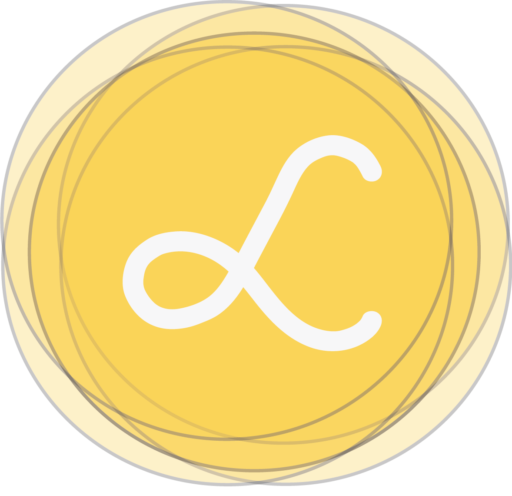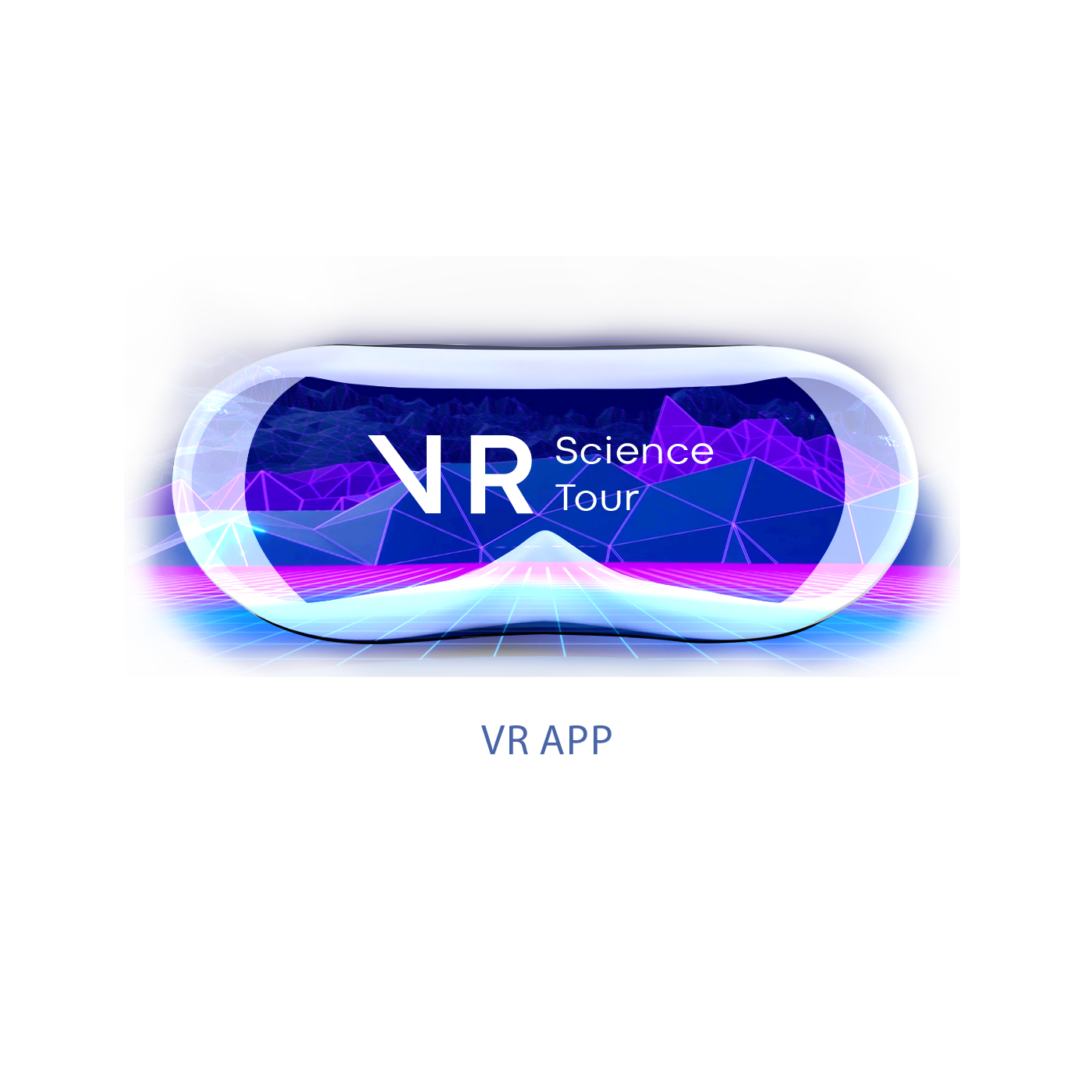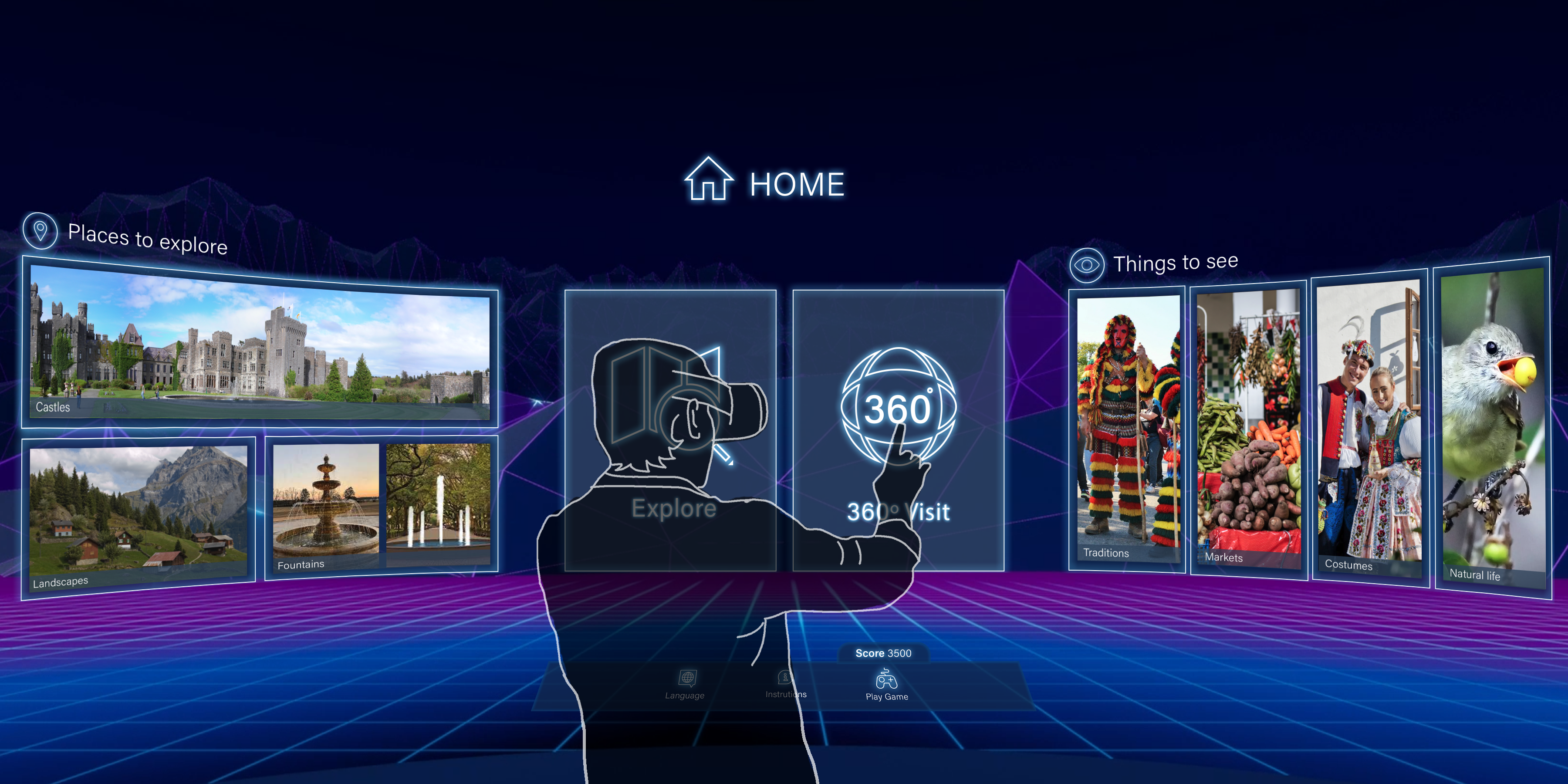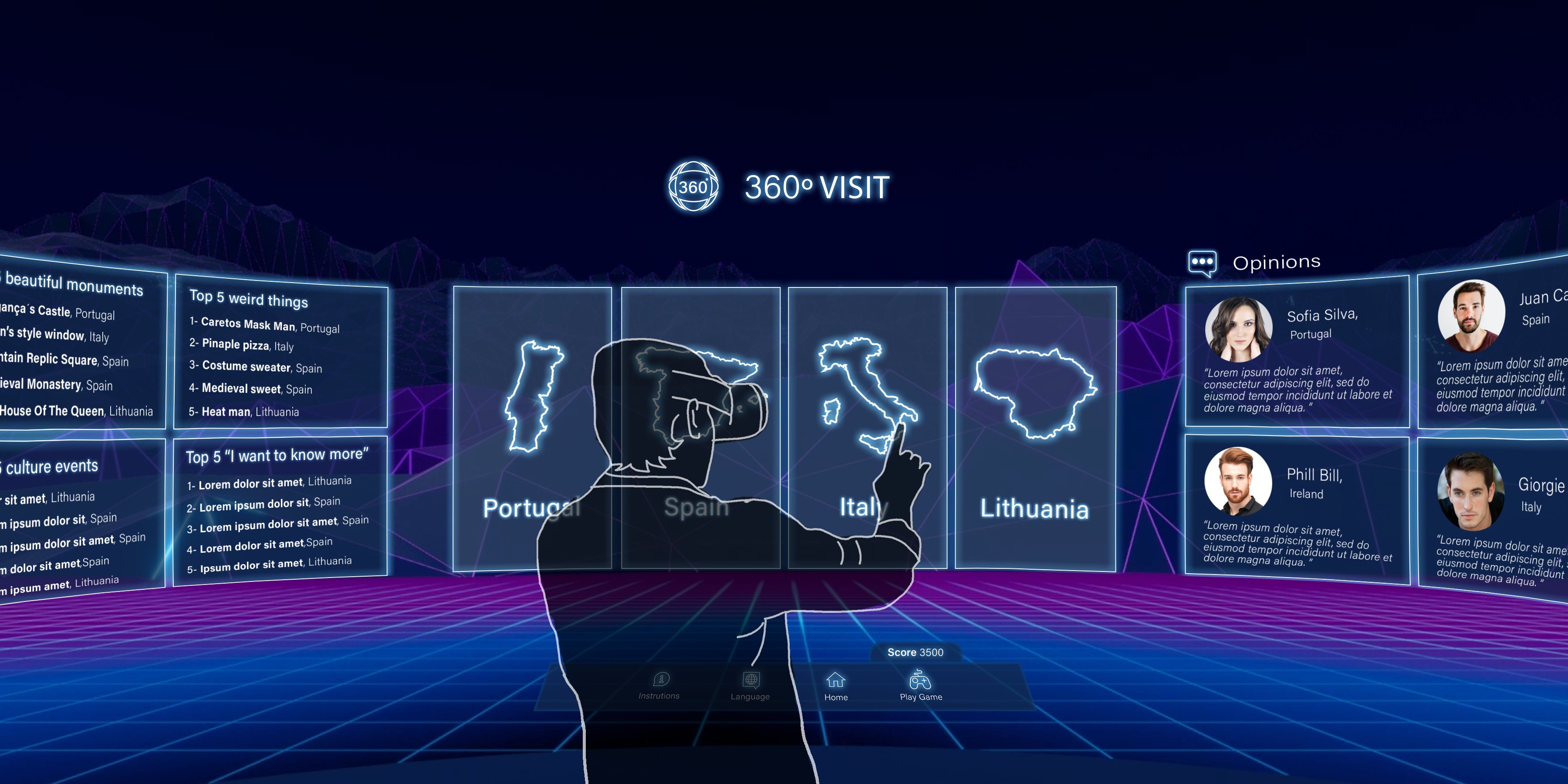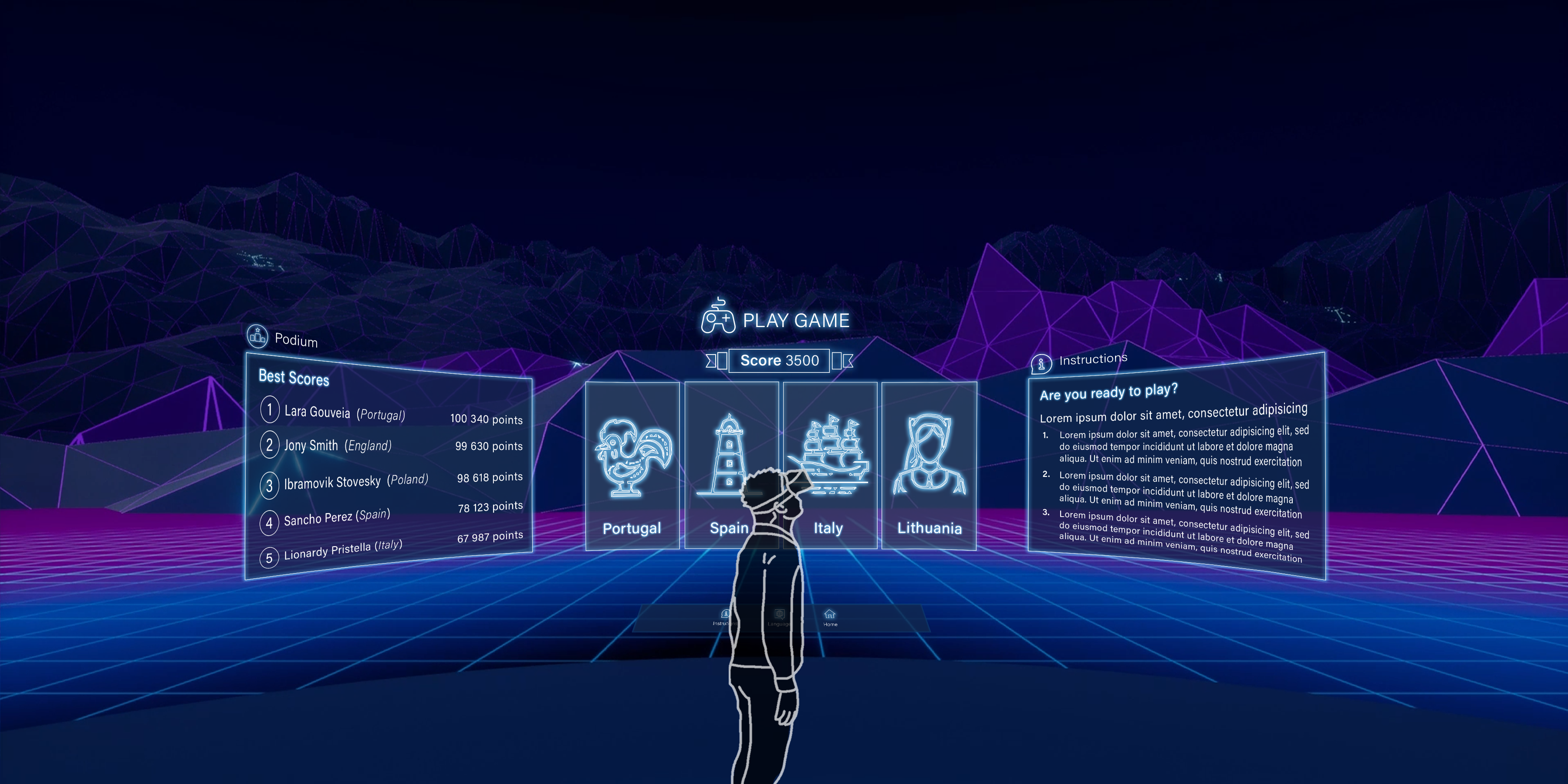Using Virtual Reality to explore the Real one
Bringing to life a world where everyone can explore and learn about diverse cultural heritage
About the project
This EU-funded project brought together four organizations from four countries to revolutionize adult education. The VRSciT initiative leverages the power of Virtual Reality (VR) to create immersive educational experiences that explore each participating nation’s cultural, social, and natural heritage.
As a member of the ByAR team, my role was to design the User Interface (UI) and to participate in User Experience (UX) design and environment.
This project was developed as a team member of ByAR – Augmented Your Reality, where I worked as a designer. All rights reserved.
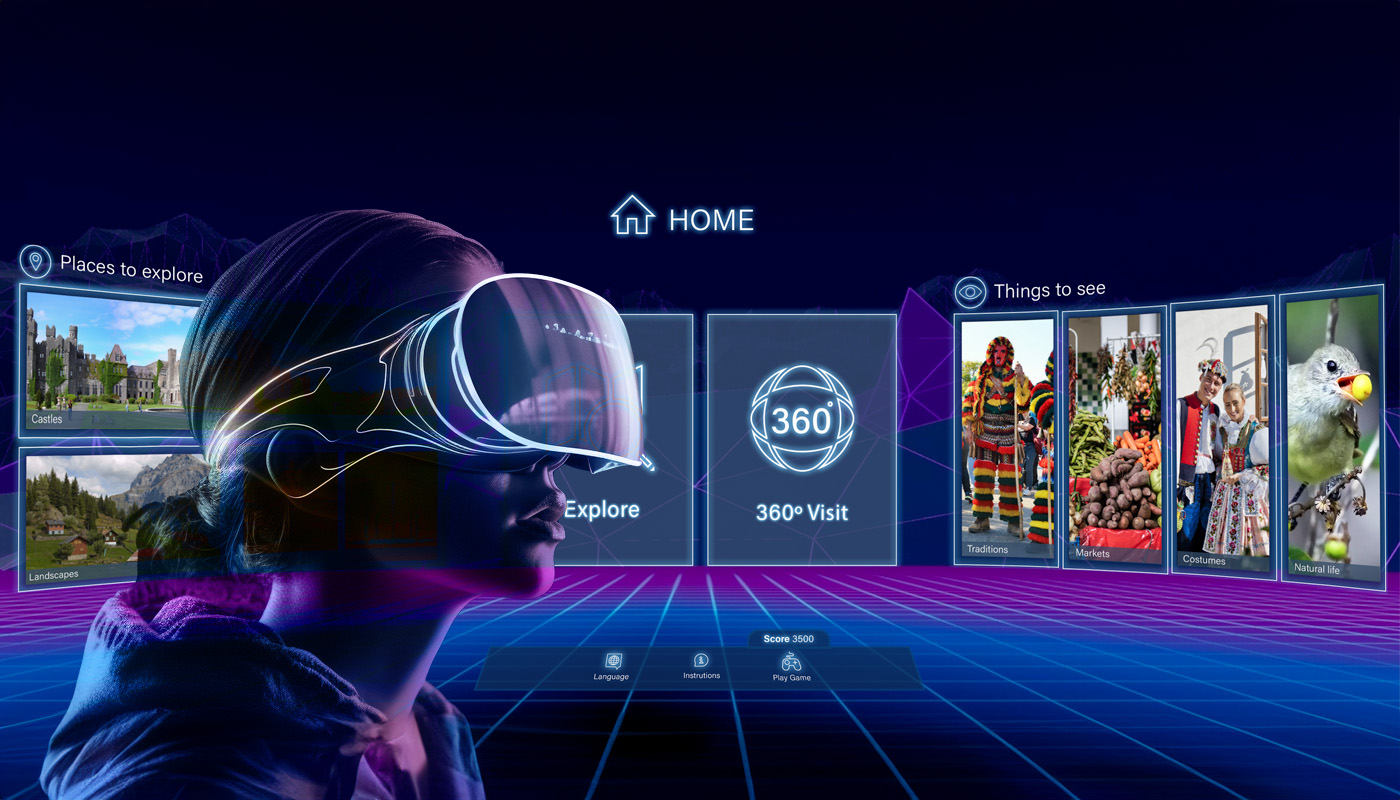
The idea
Our primary objective was to construct a wholly fictitious yet captivating universe. This experience was meticulously designed to leave an enduring impact on players. Key aesthetic influences included the nostalgic charm of 80s gaming, the allure of sci-fi, and the contemporary elegance of transparency effects.
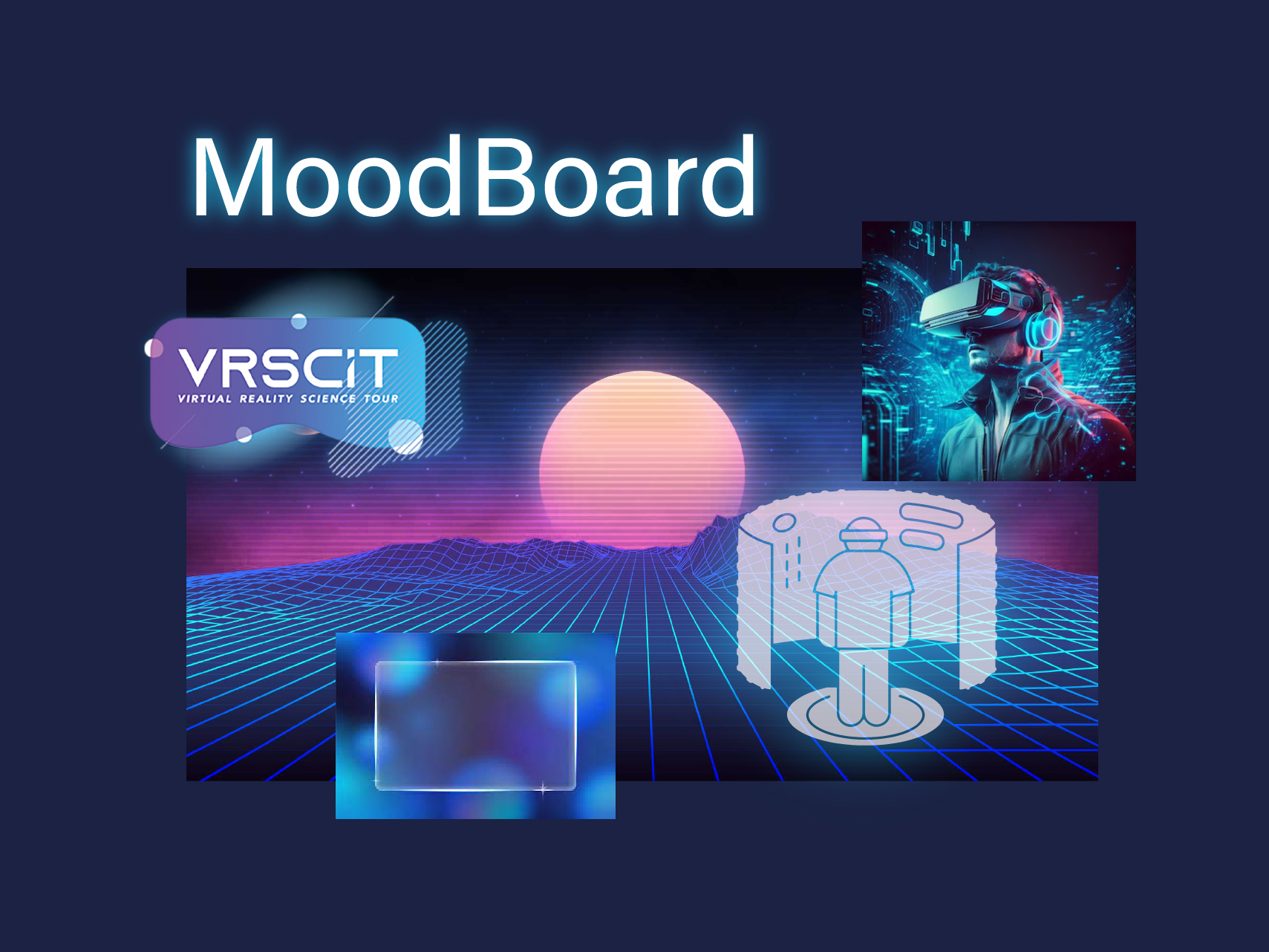
What content?
What to talk about? What kind of information is relevant and captivating? How do you create gamification?
The different levels were defined to take advantage of VR immersion.
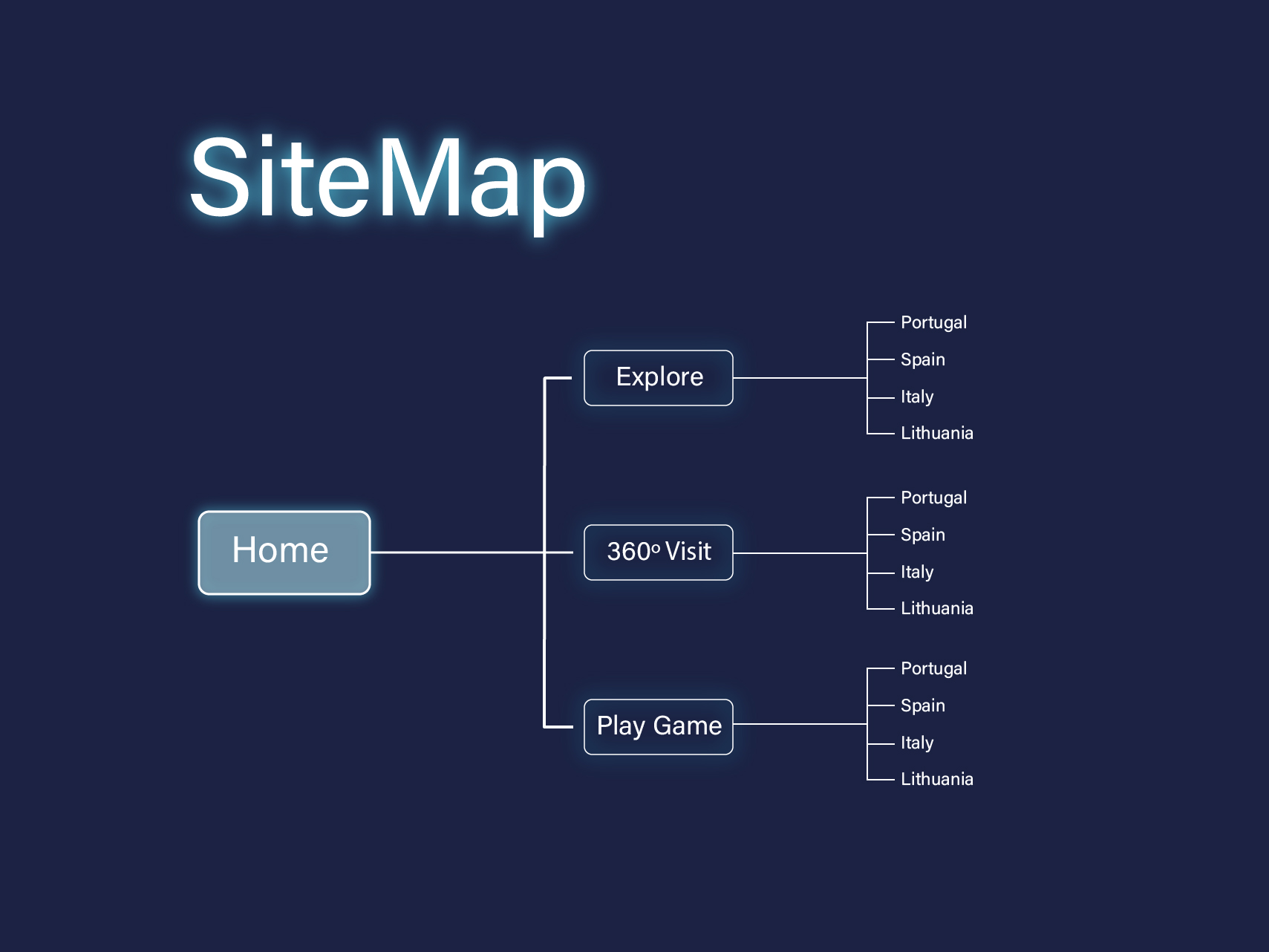
The process
Initially, I felt a significant need to deepen my understanding of VR app design. This knowledge boosted my confidence in tackling the project. The subsequent phase involved harmonizing the visual concept with the content to establish the app’s structure.
Creating the retro-80s video game background featuring mountains presented the initial design challenge. This required extensive experimentation with various imagery to achieve the desired sense of altitude.
One of my main concerns was ensuring that users had a clear expectation of what to expect in each section. To achieve this, I incorporated representative content in each submenu. Additionally, for many people, VR is not a usual experience. So, to decrease the cognitive overloading, I focused on maintaining visual consistency throughout the app interfaces to enhance user familiarity.
The final result
The final product is an immersive and intuitive VR app. User feedback confirms its engaging nature. This VR experience is now accessible at Bragança’s Centro de Ciência Viva. For more details on the project, please visit the VR SPOT page.
